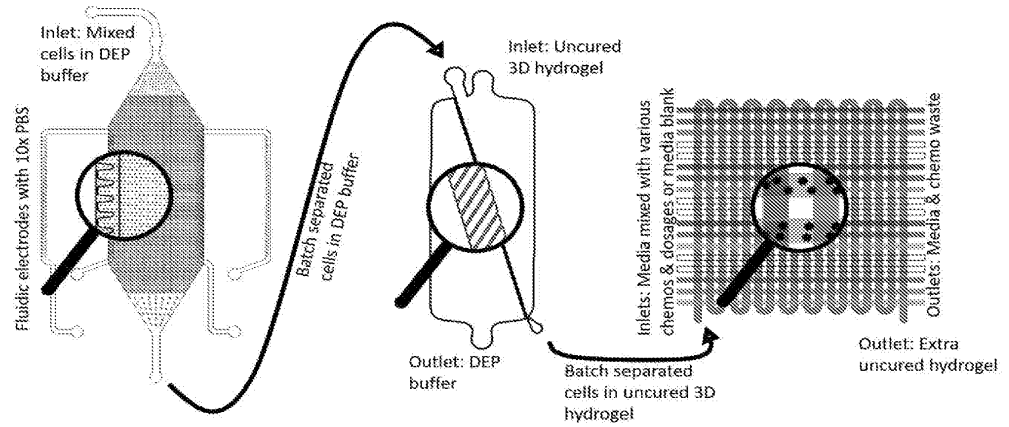THE CHALLENGE
A major challenge in cancer diagnostics and drug development is the lack of an integrated, efficient system for isolating and testing the many different cell types found in tumor biopsies. Current methods are fragmented and labor-intensive, often requiring multiple manual steps like centrifugation and buffer exchange, which not only slow down processing but also risk damaging delicate cells and introducing contamination. Technologies like fluorescence-activated cell sorting rely on labels that can alter cell behavior, while conventional dielectrophoresis using metal electrodes can produce harmful byproducts and require non-physiological conditions. Most importantly, existing systems cannot replicate the complex three-dimensional environments that tumor cells experience in the body, making drug testing results less reliable. This disconnect between advanced cell analysis techniques and real-world usability limits scalability and slows the path to personalized therapies, creating a significant business opportunity for platforms that combine label-free cell sorting, buffer exchange, 3D culture, and high-throughput drug testing in one automated and user-friendly system.
OUR SOLUTION
We have a fully integrated microfluidic chip that streamlines the complex process of cell separation, buffer exchange, and drug testing into one compact and automated system. Using a contactless dielectrophoresis module, the platform isolates specific tumor cell subtypes without damaging them or requiring chemical labels. These cells are then gently concentrated and embedded in a three-dimensional hydrogel matrix, mimicking real tissue environments without the need for centrifugation or manual handling. The final stage of the chip features a serpentine assay chamber where a wide range of drugs or treatment agents can be delivered through a porous membrane, allowing for controlled and realistic exposure to the encapsulated cells. By combining these key functions on a single PDMS chip, this technology enables faster, more accurate, and scalable testing of personalized cancer therapies, offering a valuable tool for biotech companies, pharmaceutical developers, and clinical researchers looking to accelerate drug discovery and improve patient outcomes.

Figure: Schematic shows separation and culture process.
Advantages:
- Label-free, contactless cell separation preserving viability
- Integrated on-chip buffer exchange and hydrogel encapsulation
- Automated 3D culture and drug testing in physiologically relevant conditions
- High-throughput, end-to-end workflow reducing manual handling
Potential Application:
- Personalized cancer drug screening
- High-throughput pharmaceutical testing
- Tumor heterogeneity profiling
- 3D cell biology and immunology research